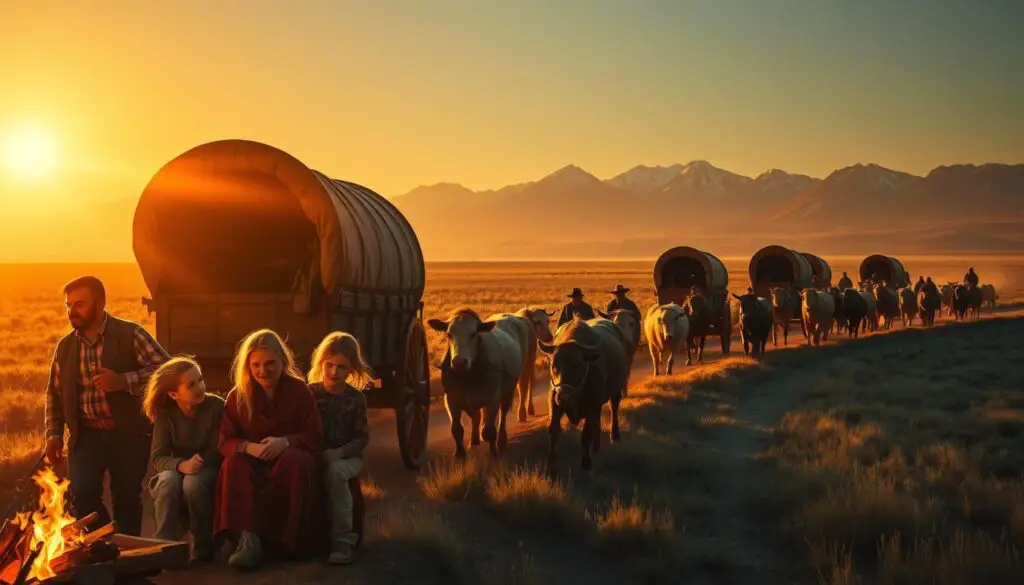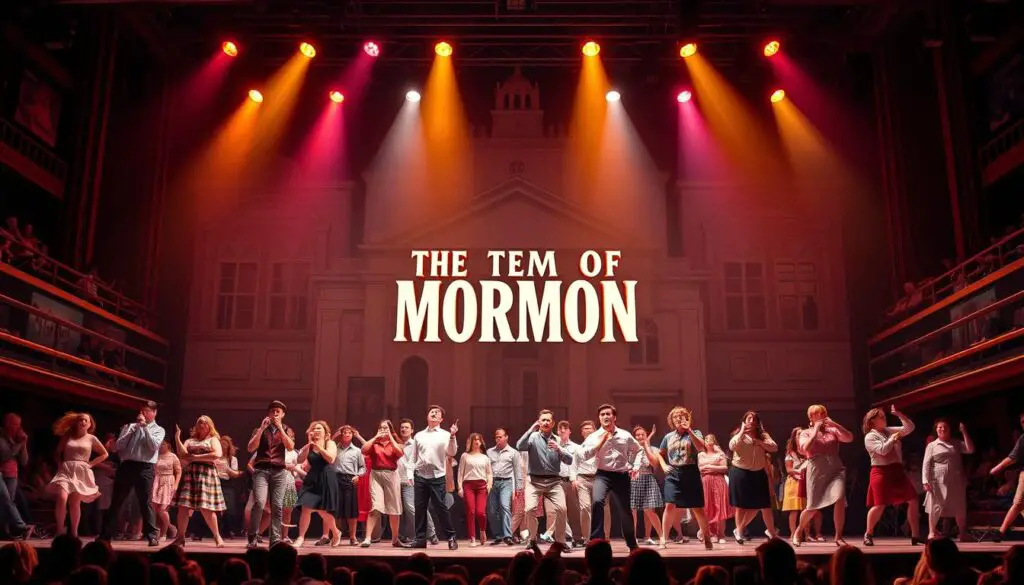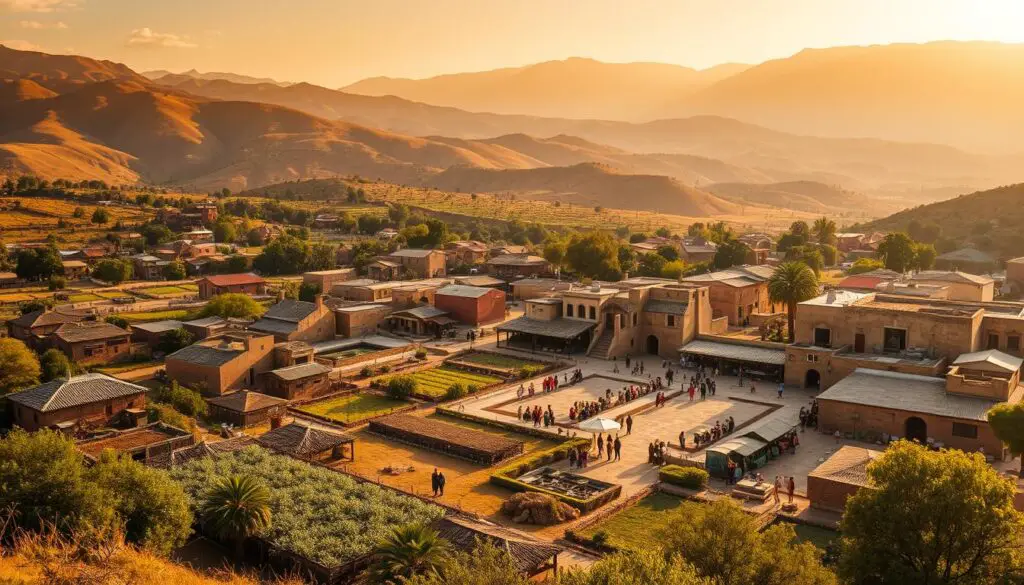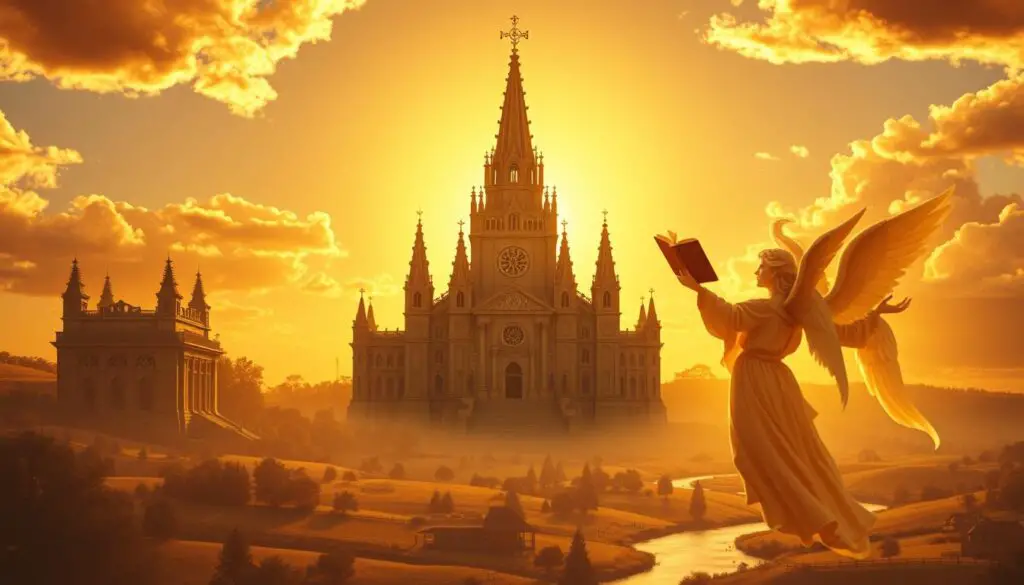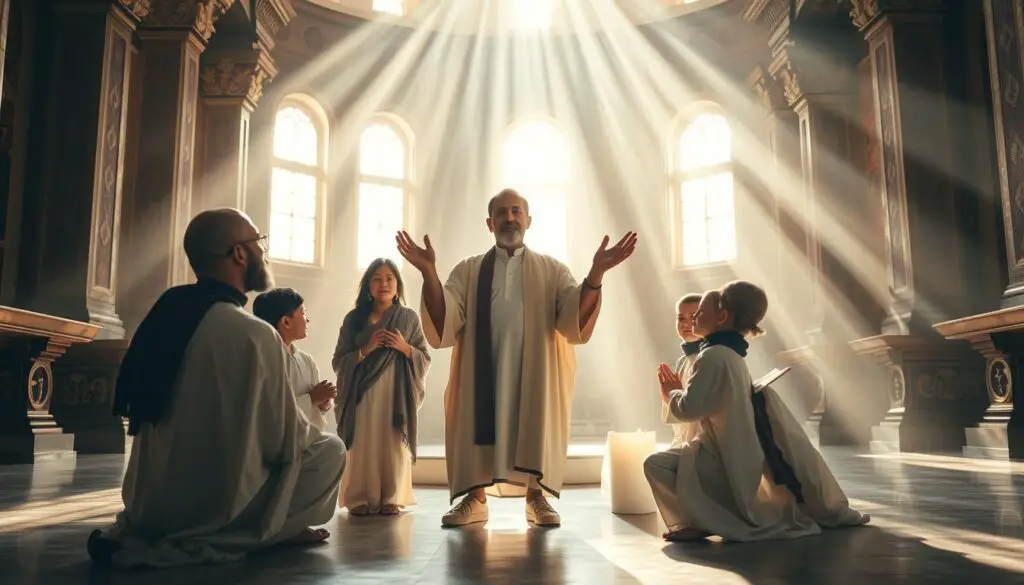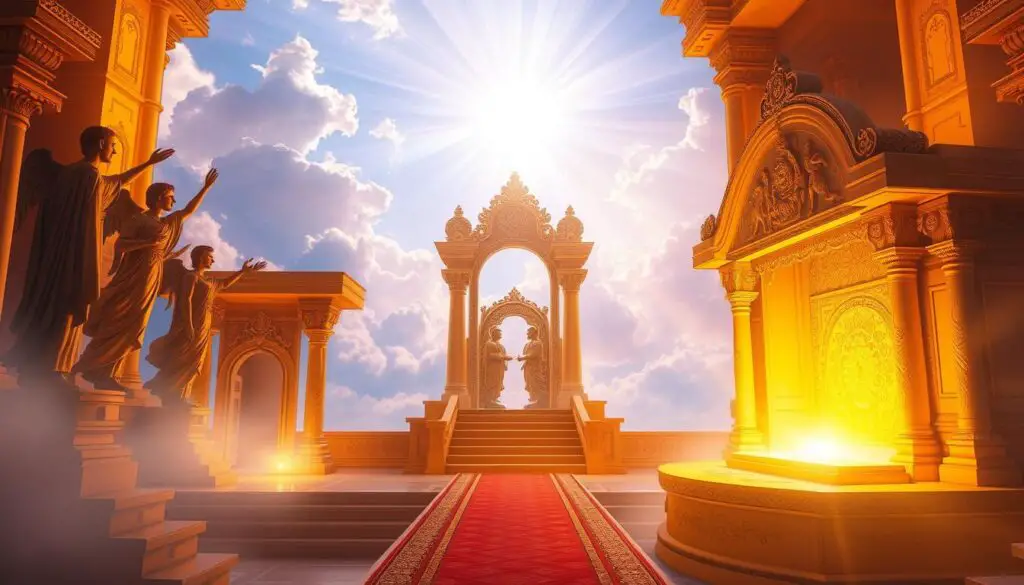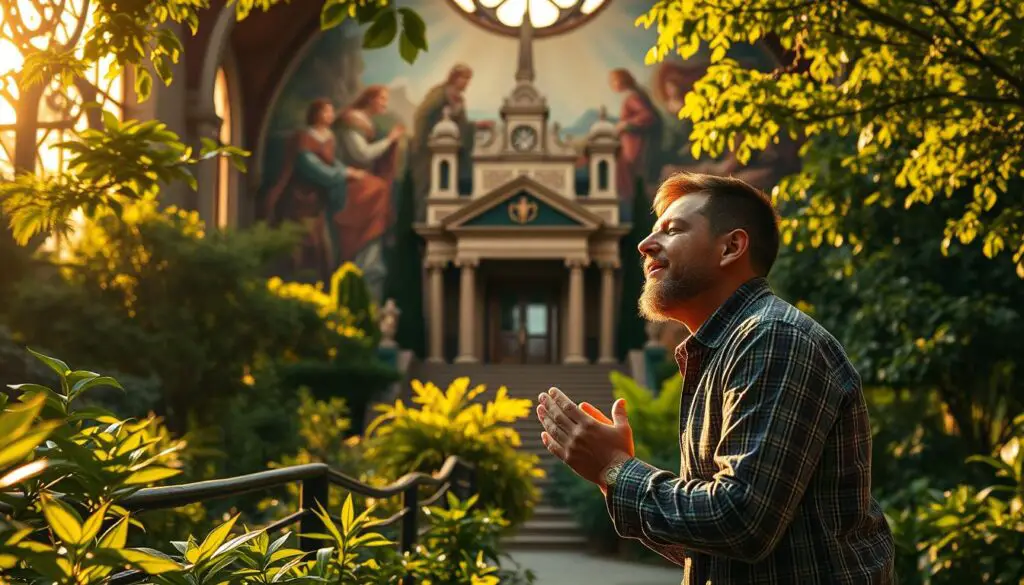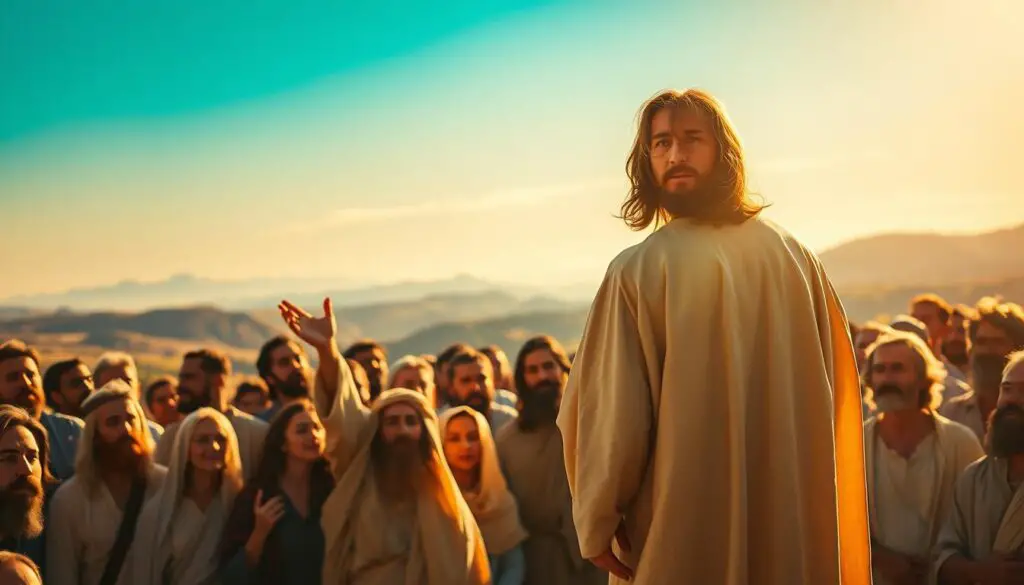Welcome to your ultimate guide to understanding the core principles of the Church of Jesus Christ of Latter-day Saints. This faith, rooted in restoration and revelation, emphasizes teachings that shape daily life and spiritual growth. Here, we’ll explore how these ideas evolved and why they matter today.
Historical figures like Bruce R. McConkie played a key role in clarifying church teachings. His influential book, Mormon Doctrine, sparked discussions that still resonate. While some teachings have been refined over time, their essence remains central to the faith.
This guide balances history with modern perspectives. You’ll learn how early debates shaped today’s practices and how the church adapts while staying true to its roots. Whether you’re new to the topic or deepening your knowledge, we’ll keep things clear and engaging.
Key Takeaways
- Discover the foundational beliefs of the Latter-day Saints faith and their modern relevance.
- Understand Bruce R. McConkie’s lasting impact on church teachings.
- Explore how historical revisions refine—but don’t replace—core principles.
- Learn how restoration and revelation guide the church’s evolution.
- Gain insights into balancing tradition with contemporary applications.
Introduction to the Mormon Faith and Its Doctrinal Landscape
Navigating the beliefs of the Church of Jesus Christ of Latter-day Saints requires clarity amid widespread misconceptions. This section offers a balanced look at its teachings, focusing on how they shape daily life and spiritual growth for millions worldwide.
Purpose of This Guide
Whether you’re exploring this religion or deepening your understanding, this guide serves two goals. First, it provides accurate insights into practices often misunderstood in media. Second, it connects historical roots to modern applications, showing how principles remain relevant today.
Understanding the Core Beliefs
Central to this faith are teachings about Jesus Christ’s role as Savior, the importance of prophets, and ongoing revelation. Followers emphasize family, service, and personal growth through covenants like baptism. These ideas aren’t just abstract—they guide decisions, relationships, and community involvement.
Misrepresentations often overshadow these nuances. For example, while temples play a sacred role in worship, their purpose extends beyond ritual to fostering unity and commitment. By focusing on lived experiences rather than stereotypes, we gain a truer picture of this vibrant religion.
The Historical Evolution of Mormon Teachings
The roots of the Church of Jesus Christ of Latter-day Saints trace back to early 19th-century America. At its core lies a story of spiritual seeking, revelation, and perseverance that shaped its unique identity among Christian churches.
Early Beginnings and Foundational Moments
Joseph Smith’s journey began in upstate New York during the 1820s. As a young man, he sought answers amid competing religious ideas of the time. His First Vision in 1820, where he reported divine guidance, became the catalyst for organizing the church a decade later.
Key events unfolded rapidly. The publication of the Book of Mormon in 1830 provided theological groundwork. Early followers faced intense opposition, yet their move westward—first to Ohio, then Missouri—strengthened communal bonds and worship practices.
The Role of Key Historical Texts
Scriptures like the Book of Mormon anchored early teachings. Joseph Smith called it “the most correct of any book,” emphasizing its role in clarifying Christian principles. Over time, additional revelations were compiled into texts like Doctrine and Covenants, guiding church structure and rituals.
Historical records show how challenges refined beliefs. Persecution in Illinois and the exodus to Utah tested faith but also solidified doctrines about resilience and divine purpose. These experiences still inform how members interpret their history today.
Understanding mormon doctrine and Its Core Principles
Clarity in religious teachings forms the backbone of any faith community. For the Church of Jesus Christ of Latter-day Saints, precise definitions help members and outsiders alike grasp foundational ideas. Let’s break down essential concepts and why wording matters.
Defining Key Doctrinal Terms
Central to this theology are terms like “plan of salvation” and “priesthood keys.” The first describes humanity’s journey toward divine potential, while the latter refers to leadership responsibilities. Another vital concept—eternal progression—emphasizes continual spiritual growth beyond mortal life.
Historical revisions show how language evolves. Early editions of church materials used phrases like “free agency,” later updated to “moral agency” to emphasize accountability. These tweaks reflect deeper theological precision rather than doctrinal shifts.
The Significance of Doctrinal Clarity
Clear teachings prevent misunderstandings. For example, official statements distinguish between core beliefs (unchanging) and policy adjustments (contextual). This distinction helps members navigate complex topics while staying anchored to essentials.
Authority plays a key role here. While respected works like Bruce R. McConkie’s Mormon Doctrine influenced generations, recent church manuals prioritize current prophetic guidance. As one leader noted: “Truth isn’t just about being right—it’s about being clear.”
Foundations in Restoration: Joseph Smith’s Vision and the Book of Mormon
At the heart of the Latter-day Saints’ story lies a transformative moment that reshaped religious history. This section explores how visionary experiences and ancient texts became cornerstones for a growing faith community.
The First Vision and Divine Calling
In 1820, a 14-year-old Joseph Smith sought clarity amid competing religious ideas. His prayer in a wooded grove reportedly led to a divine encounter with God and Jesus Christ. This event, now called the First Vision, marked the start of what members believe was a restoration of original Christian teachings.
Smith described being instructed not to join existing denominations. Instead, he was tasked with reestablishing Christ’s “true church” through ongoing revelation. This experience fueled his determination despite skepticism, laying groundwork for organizing the church a decade later.
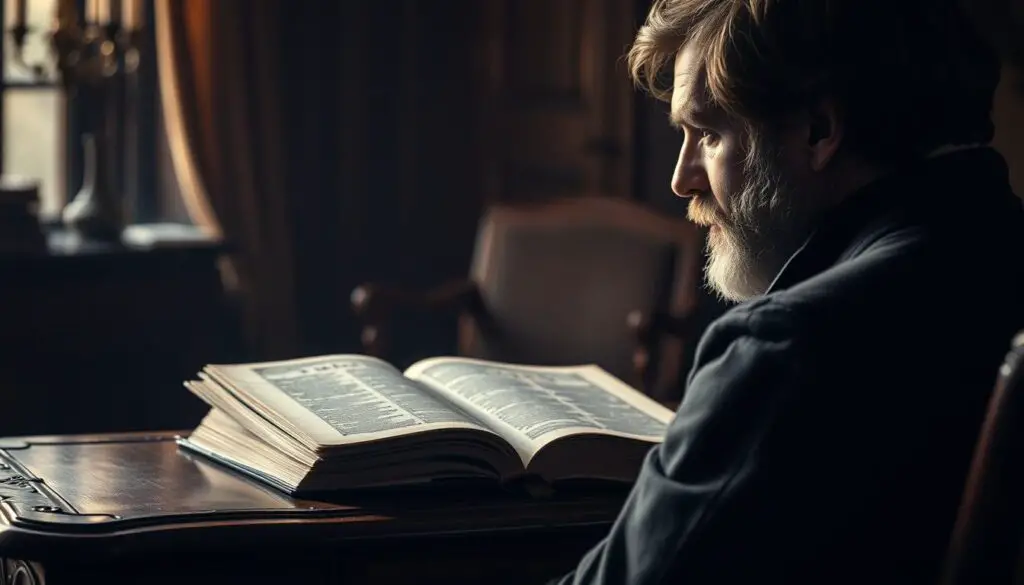
The Translation and Impact of the Book of Mormon
Central to this restoration was translating ancient records Smith said he received as golden plates. Using seer stones and divine guidance, he produced the Book of Mormon—a text followers view as scripture alongside the Bible.
Published in 1830, it narrates pre-Columbian American civilizations and Christ’s post-resurrection ministry there. For believers, its teachings validated the need for a restored church and clarified doctrines like baptism and priesthood authority.
Today, over 150 million copies exist worldwide. Its message continues shaping worship practices, missionary work, and personal study—proof of its enduring role in the faith’s identity.
Key Doctrines of the LDS Church and Their Implications
Central to the Latter-day Saints’ spiritual journey are teachings that bridge earthly life with eternal purpose. These principles shape daily choices while offering hope for life beyond mortality. Let’s explore how core beliefs about Jesus Christ and the Atonement guide this vibrant faith.
Jesus Christ as Savior and Redeemer
For members of the Church of Jesus Christ of Latter-day Saints, Jesus isn’t just a historical figure—He’s the living foundation of their faith. They believe His sacrifice opened the path to resurrection and forgiveness for all people. This doctrine emphasizes both grace and personal effort, encouraging members to follow Christ’s example through service and repentance.
The Atonement and Eternal Life
The Atonement—Christ’s suffering in Gethsemane and on the cross—is seen as the ultimate act of love. It’s not just about erasing mistakes but transforming hearts. As one church leader explained: “Through His mercy, we become better versions of ourselves.”
This belief fuels hope for eternal families and progression in the afterlife. Members participate in ordinances like baptism to covenant with God, trusting in Christ’s promise of salvation. These practices, paired with scripture study, strengthen their connection to divine guidance.
Restored priesthood authority gives these doctrines clarity. Leaders teach that Christ’s original church structure, including apostles and prophets, was revived to ensure truth remains accessible. For Latter-day Saints, this blend of ancient and modern revelation creates a faith that’s both rooted and responsive.
The Role of Church Leaders and Prophets in Guidance
Leadership within the Church of Jesus Christ of Latter-day Saints has always been pivotal to its spiritual direction. From its earliest days to modern times, prophets and councils have shaped teachings while addressing evolving challenges. Their guidance blends divine inspiration with practical wisdom.
Influential Figures and Modern Prophets
Joseph Smith’s role as the faith’s founding prophet remains foundational. His successors, like Brigham Young and David O. McKay, expanded the church’s reach through missionary work and organizational reforms. Today, leaders such as Russell M. Nelson emphasize global unity and interfaith dialogue.
Bruce R. McConkie’s writings, though not official doctrine, influenced generations of members. His focus on scriptural clarity helped standardize teachings during periods of rapid growth. Modern prophets continue this legacy by addressing topics like family values and technology’s ethical use.
Leadership in Doctrinal Development
The First Presidency—a trio of senior leaders—works with the Quorum of the Twelve Apostles to maintain doctrinal integrity. They review policies, issue official statements, and ensure teachings align with core principles. For example, recent adjustments to youth programs reflect their focus on mental health support.
Key decisions often emerge from consensus. When revising temple ceremonies in recent years, leaders balanced tradition with clearer language. As one apostle noted: “Our duty is to make eternal truths accessible to all generations.” This collaborative approach keeps the church anchored while adapting to new eras.
Moderation and Revision in Religious Teachings
Religious teachings, like living documents, adapt while preserving their essence. Updates to church materials often aim for clarity, aligning language with modern understanding without altering foundational truths. This balance reflects a commitment to both tradition and growth.
Changes Across Editions of Authoritative Works
Early editions of influential books sometimes used bold language to emphasize teachings. Over time, revisions softened phrases that could confuse or alienate readers. For example, a 1966 edition of a widely read theological work removed speculative claims about baptism practices, focusing instead on scriptural support.
Church leaders have described these edits as “corrective refinements” rather than doctrinal shifts. One apostle noted: “Truth remains constant, but our ability to express it matures.” This approach ensures core principles stay intact while addressing cultural sensitivities.
Members generally view updates as evidence of ongoing revelation. Adjustments to temple-related terminology in manuals, for instance, helped newer generations connect with ancient symbolism. Such changes reinforce the restored church’s emphasis on accessibility.
Language evolution also mirrors broader societal shifts. Where past texts might have framed teachings as rigid rules, modern editions highlight personal agency and Christ-centered growth. This tone aligns with the church’s global mission to serve diverse communities.
Temples, Ordinances, and Sacred Practices
For members of the restored church, sacred spaces and rituals form a bridge between daily life and eternal promises. Temples stand as more than architectural marvels—they’re settings where families unite across generations and individuals deepen their spiritual commitments.
The Importance of Temple Worship and Covenants
Temple ceremonies center on covenants—sacred agreements with God. These include promises to live with integrity, serve others, and follow Christ’s teachings. One leader described temples as “schools for eternal truths,” where members gain perspective on life’s purpose.
Historical roots trace temple practices to early church revelations. Today, over 170 temples worldwide host rituals like sealings, which bind families beyond mortality. These acts reinforce communal bonds while nurturing personal growth.
Baptism and Other Essential Ordinances
Baptism marks the first step in spiritual rebirth. Performed by priesthood authority, it symbolizes cleansing and commitment. Youth often participate at age eight, reflecting teachings about accountability and divine grace.
Other key ordinances include:
- Confirmation: Receiving the Holy Ghost’s guidance
- Endowment: Learning eternal principles through symbolic instruction
- Sealing: Uniting families in sacred relationships
These practices, rooted in scripture, adapt to modern contexts without losing their core meaning. As members engage in them, they reaffirm their connection to the restored church’s mission of hope and transformation.
Revelation and the Principle of Continuous Guidance
For members of this faith, ongoing dialogue with the divine isn’t just possible—it’s essential. This belief in continuous revelation shapes how they navigate life’s challenges and opportunities. Unlike static traditions, their teachings evolve through divine guidance while staying anchored to eternal truths.
Communicating with the Divine
Joseph Smith’s early visions set a pattern for seeking heavenly direction. Today, members believe God still speaks through personal inspiration and church leaders. A current apostle explains: “Revelation isn’t locked in the past—it’s how heaven guides real people now.”
Scriptures and modern practices show this principle in action. The First Presidency might adjust policies based on collective spiritual insights. Individuals also receive answers during prayer or scripture study, influencing choices from careers to family matters.
Priesthood authority ensures clarity amid diverse experiences. Leaders help distinguish personal impressions from official doctrine. This balance lets members grow spiritually while maintaining unity. As one believer shared: “Revelation turns abstract faith into lived truth.”
From global decisions to daily routines, this principle keeps the religion vibrant. It reminds followers that divine communication isn’t reserved for ancient prophets—it’s a living process shaping their journey today.
Impact of Cultural and Historical Context on Mormon Beliefs
Understanding how beliefs adapt to their surroundings reveals much about a faith’s resilience. For the Church of Jesus Christ of Latter-day Saints, cultural shifts and historical pressures have shaped both teachings and public perception. These influences show how a global religion balances timeless truths with changing worldviews.
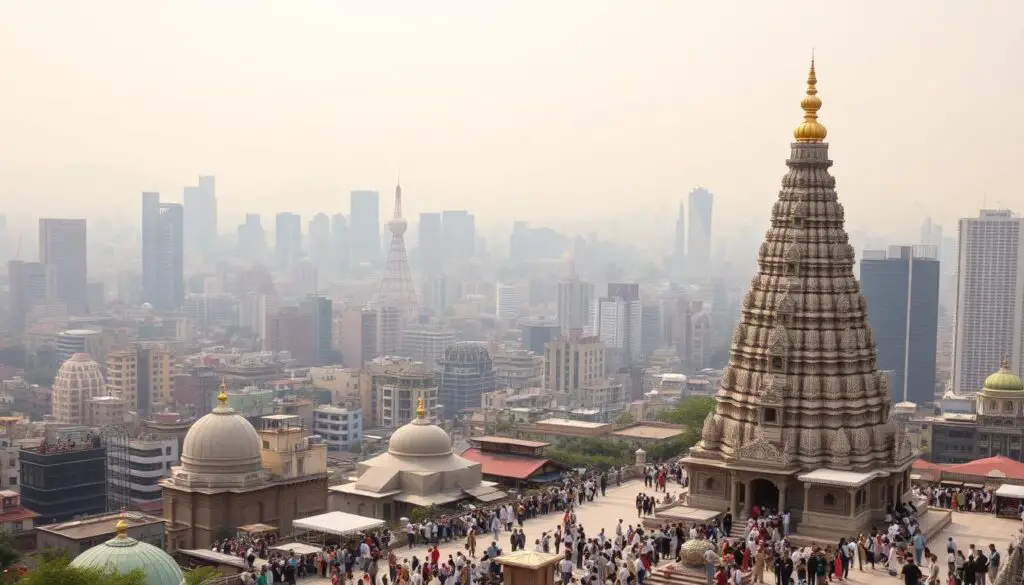
Social Influences on Doctrine
Societal changes often prompt reflection within religious communities. Early church practices like plural marriage, once seen as essential, were discontinued as people and governments challenged their relevance. This shift shows how external pressures can refine—but not redefine—core beliefs.
Modern examples include updates to youth programs and temple recommend interviews. Leaders emphasize principles like inclusion while preserving sacred temple ordinances. As one historian noted: “Adaptation isn’t compromise—it’s clarity in new contexts.”
Media Portrayals and Public Perception
Popular culture often oversimplifies complex traditions. TV shows and films sometimes depict secretive rituals, ignoring the faith’s focus on family and service. These portrayals create gaps between church members’ lived experiences and public stereotypes.
Historical events also color perceptions. The 19th-century westward migration, while central to the faith’s history, often overshadows its current humanitarian efforts. Yet media coverage of the church’s global aid programs has slowly reshaped its image as a force for good.
Through it all, members navigate dual identities—honoring tradition while engaging a modern world. Their ability to evolve without losing essence offers lessons for any faith community in changing times.
Counterpoints: Internal Criticisms and Debates on Doctrine
Healthy debates often refine religious traditions more than silence ever could. Within the Church of Jesus Christ of Latter-day Saints, discussions about scriptural interpretation and policy adjustments have shaped its journey. These conversations reveal how truth-seeking remains a dynamic, collective effort.
Scholarly Reviews and Church Leaders’ Feedback
Bruce R. McConkie’s 1958 book sparked both admiration and concern. While many valued its bold explanations, some leaders questioned its tone. The First Presidency later noted certain sections needed “careful review,” leading to revised editions that emphasized scriptural foundations over personal opinions.
Modern scholars highlight how early teachings about race evolved through revelation. For example, the 1978 priesthood expansion reflected years of prayerful discussion. As one apostle stated: “Truth isn’t found in isolation—it’s polished through shared seeking.”
Evolution of Perspectives Over Time
Views on women’s roles illustrate shifting dialogues. Early manuals focused on homemaking, while recent editions stress leadership and education. These updates don’t erase past teachings but expand their application for today’s global membership.
Key areas of ongoing debate include:
- Historical transparency: Balancing faith with factual complexities
- Cultural adaptation: Maintaining core principles while respecting local traditions
- Revelatory process: Distinguishing eternal truths from temporal policies
Through it all, the church maintains that priesthood authority ensures unity amid diversity. As debates continue, they reinforce a shared commitment to spiritual growth and Christ-centered living.
Influence on Broader Religious and Social Movements
The global footprint of the Church of Jesus Christ of Latter-day Saints extends far beyond Sunday services. Its teachings on service, family, and divine purpose have shaped social initiatives worldwide. From disaster relief to education programs, these principles inspire action across cultural boundaries.
Global Outreach and Community Impact
With over 17 million members worldwide, the church’s humanitarian arm operates in 190 countries. Projects like clean water initiatives and refugee support reflect its emphasis on “loving thy neighbor.” One leader noted: “Our faith isn’t confined by borders—it’s measured by hearts changed.”
Doctrines like eternal families foster tight-knit communities. Members in Nigeria or Brazil share similar values with those in Utah, creating a unified identity. This global network also partners with other religions on issues like poverty reduction.
The Role of American Religious Identity
The church’s roots in 19th-century America shaped its focus on agency and resilience. These themes resonate in its U.S.-based welfare programs, which combine self-reliance with collective support. Food banks and employment training reflect both American ideals and spiritual convictions.
Internationally, the faith adapts while retaining core beliefs. Missionaries learn local languages, and temples incorporate regional art styles. This balance helps the church contribute to religious pluralism without diluting its message. As societies evolve, its teachings offer a bridge between tradition and progress.
Conclusion
This exploration reveals how timeless principles adapt to meet modern needs while staying rooted in divine purpose. Over the century, teachings about restoration, covenants, and revelation have shaped a vibrant global community. From early revelations to today’s practices, the faith’s core remains anchored in hope and service.
The journey shows that growth is a collaborative effort. Leaders and members work together to balance tradition with fresh perspectives. Adjustments to policies or temple practices aren’t about changing truths—they’re about clarifying them for new generations.
Continuous dialogue keeps teachings relevant. Open discussions about history and culture help the community stay united while respecting diverse experiences. These conversations are part of what makes this faith a living tradition, always evolving yet eternally focused on Christ’s example.
As you reflect on these insights, consider how the LDS Church blends rich heritage with forward-thinking vision. Its story isn’t just in books or buildings—it’s written through the daily lives of millions striving to build a better world. That’s the real result of faith in action.
FAQ
What role does the Book of Mormon play in LDS teachings?
The Book of Mormon is viewed as scripture alongside the Bible, offering insights into Jesus Christ’s ministry and God’s plan. Members of The Church of Jesus Christ of Latter-day Saints believe it clarifies doctrines and supports teachings found in the Bible, serving as a testament of Christ’s love for all people.
How does revelation guide the Church today?
Leaders teach that God communicates through living prophets, personal inspiration, and scripture. This principle of ongoing revelation allows teachings to adapt to modern needs while staying rooted in eternal truths. Current prophets and apostles provide guidance they believe is inspired by divine direction.
Why are temples important in Latter-day Saint worship?
Temples are sacred spaces where members participate in ordinances like eternal marriage and baptism for ancestors. These practices are tied to covenants, or promises, made with God. Temple worship emphasizes unity, family bonds, and the belief in life beyond mortality.
How does the Church address historical changes in doctrine?
The Church acknowledges that some policies and practices have evolved over time. Leaders emphasize that core doctrines, such as faith in Jesus Christ and His Atonement, remain unchanged. Adjustments often reflect cultural shifts, deeper understanding, or clarified revelation.
What distinguishes LDS beliefs about Jesus Christ?
The Church teaches that Jesus Christ is the literal Son of God and Savior of humanity. His Atonement is central to overcoming sin and death, offering hope for eternal life. Members strive to follow His example through service, repentance, and covenant-keeping.
How does the Church handle criticism of its teachings?
Leaders encourage thoughtful study and prayer to address questions. Open dialogue is welcomed, but teachings are anchored in scripture and prophetic guidance. Scholars like Bruce R. McConkie have contributed to doctrinal discussions, balancing tradition with modern perspectives.
What is the significance of Joseph Smith’s First Vision?
Latter-day Saints believe Joseph Smith’s 1820 vision of God and Jesus Christ restored divine truth lost after biblical times. This event led to the translation of the Book of Mormon and the reestablishment of Christ’s Church, emphasizing personal revelation and priesthood authority.
How does the Church engage with global communities?
Through humanitarian aid, education initiatives, and missionary work, the Church focuses on serving others. Its teachings on family, self-reliance, and spiritual growth aim to uplift individuals worldwide, reflecting a commitment to Christ’s commandment to love one’s neighbor.
